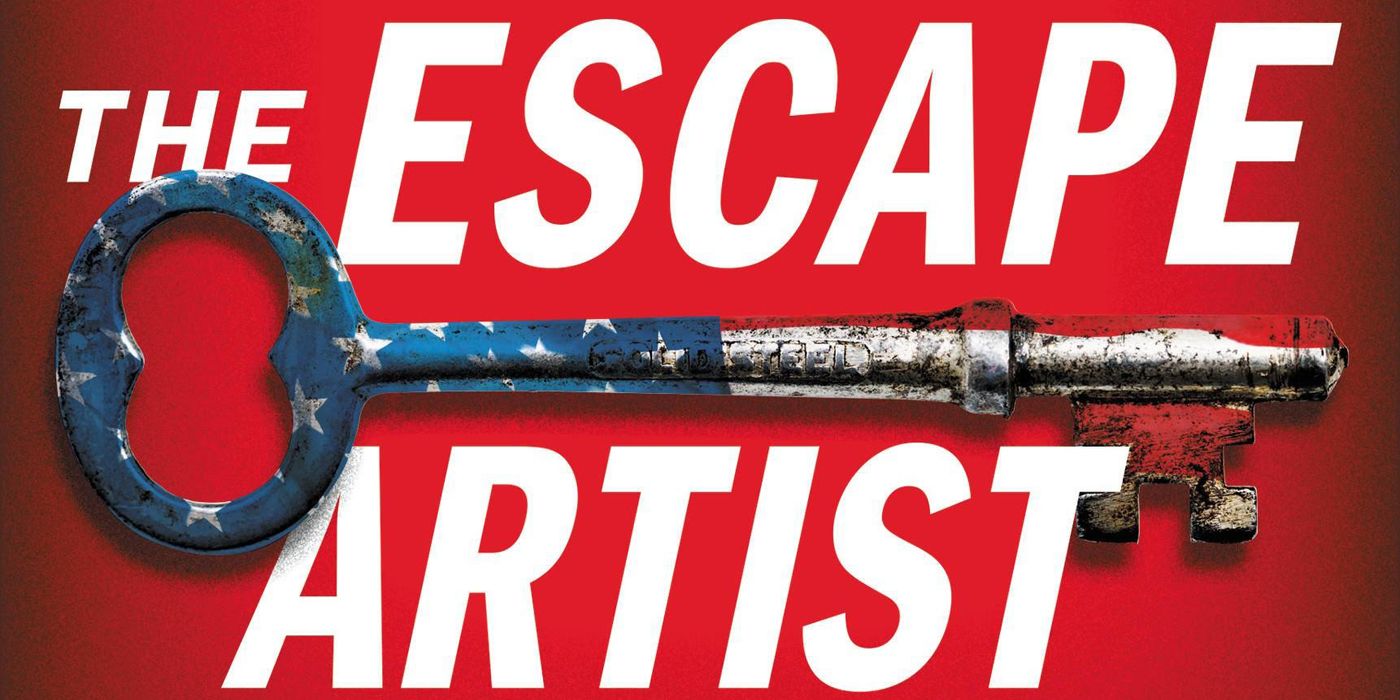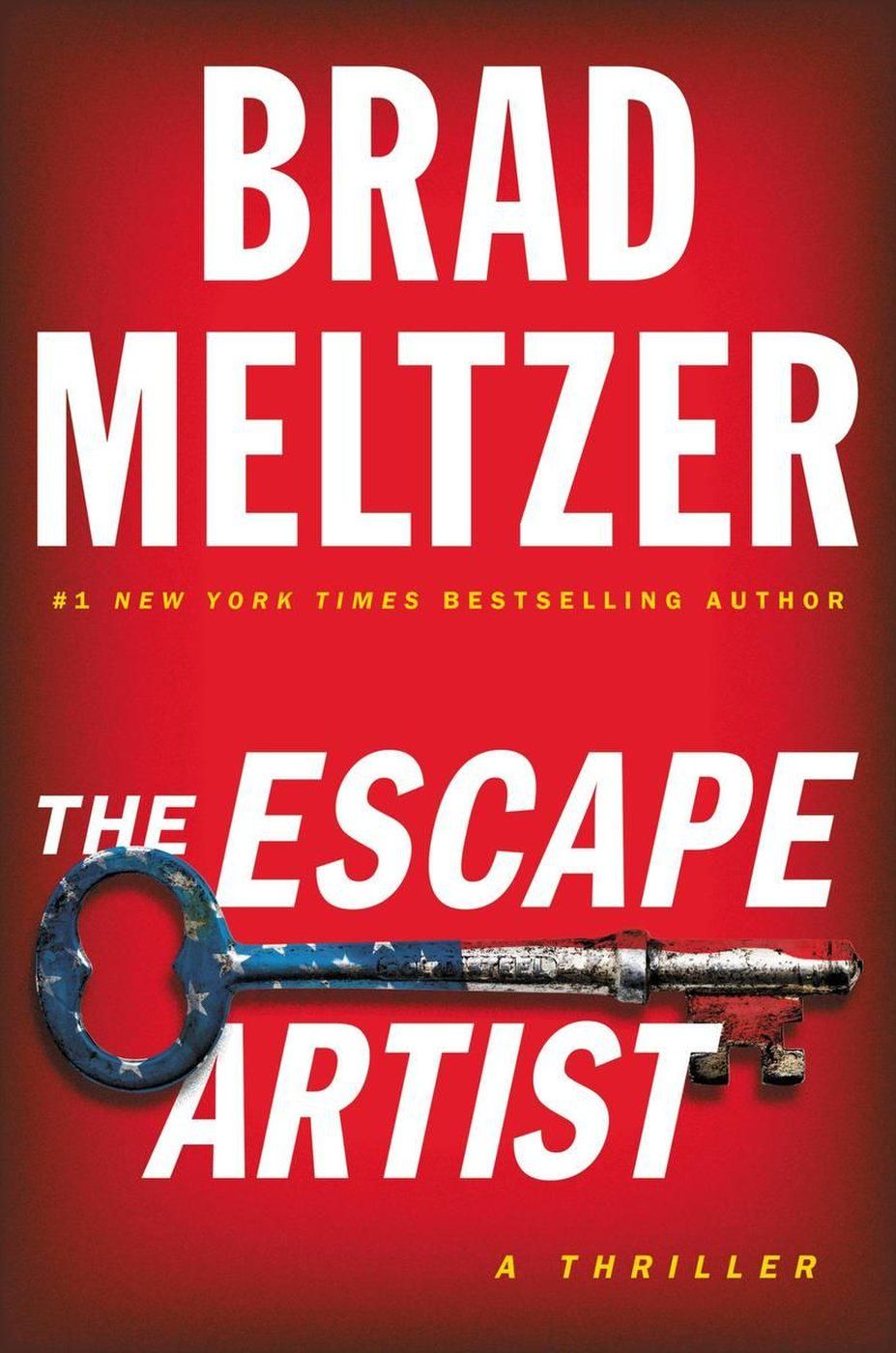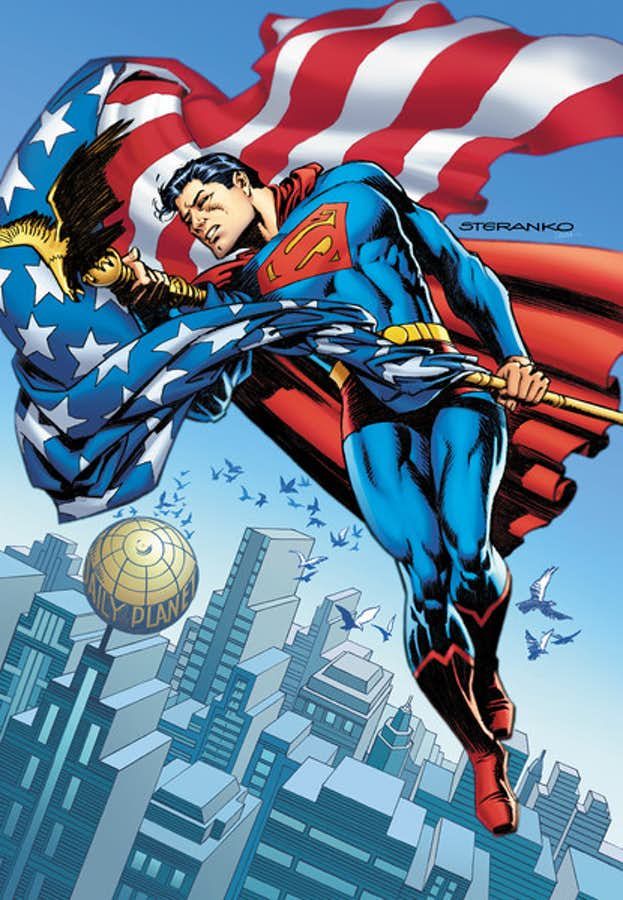Writer Brad Meltzer wears a lot of different hats -- but maybe not as many as the protagonist of his latest thriller.
The novelist and comic book scribe spent the past few years hosting TV shows on the History Channel, including Brad Meltzer's Lost History, about lost artifacts from America's past. And while his efforts proved successful at finding some (including a famous flag from the site of New York's 9/11 attacks), they also served as inspiration for The Escape Artist, his just-released novel. The thriller mashes up the real-life Army post of war artist with the country's secretive history with the illusionist followers of Harry Houdini in the form of Nola Brown -- a new protagonist set to take his writing career in all-new directions.
RELATED: Meltzer Opens His House of Secrets, Reflects On Identity Crisis In DC Comics’ Rebirth Era
At the same time, the comics enthusiast is prepping a story for DC Comics' incoming milestone Action Comics #1000 with artist John Cassaday. As ever, Meltzer sees the influence of his favorite superheroes impacting his novels and vice versa. CBR spoke with the writer about the surprising origins of The Escape Artist, his take on the current state of comics and more.
CBR: I was trying to describe to someone the path you've been on the past few years between your television work and your path of finding significant historical objects like the flag that flew after 9/11, and the phrase I thought best did it was "nerdy Indiana Jones."
Brad Meltzer: [Laughs] That's my dream come true! The funny part was that on the show, I didn't even realize I was doing this, but a couple of times I just blurted out "It belongs in a museum" which is one of his famous lines. That's either revealing myself in the best way, or playing out my fantasy on national television.
Well, your thriller novels have always been built on real world or historical ideas, but with this new book it seems that your hands-on research has affected the books even further. Do you feel like you're a different writer for having done this stuff?
Absolutely. And I'll also say, especially for the CBR audience, that the comic books have influenced my book in a major way. This is my 20th year as a writer, and you can't help but get nostalgic at that point -- especially for someone like me who's obsessed with history. So I looked back and said, "What's my favorite stuff? What did I write that was reviewed the best, and what did I like the best myself?" Often I found the answer was the projects where I got to do a lot of character work like Green Arrow and Identity Crisis and Red Tornado in Justice League. And I thought to myself, "I really need to bring that back to the thrillers. If I want to get better 20 years in, I need to do my best work in the place where I started my work." And so I wouldn't even start this book until I had this character. That's what all my comics have in common: I know the characters so well. So I wanted to write this book from the same perspective, and it took me an extra year to crack that character.
Tell me about Nola Brown -- this woman who straddles the line between soldier and artist.
To take it piece by piece, the character was first born when I was recording our show Lost History and searching for the 9/11 flag, the producers wanted a military location to film. God bless the production person who chose Fort Belvoir in Virginia, because what no one knew when we were filming is that I was running off and getting tours behind the scenes. And as I was walking around I saw that they had a painting by Adolf Hitler, and all this other art from top military people. As a comic book person, I'm thinking, "Why does the government have all this art?" It made no sense. Then they said, "No, you have to meet our artist in residence."
It's this position they call the War Artist, and I didn't even know what that was. So they took me back to this tiny room and explained to me that since World War I, the U.S. government has had a painter on staff who paints disasters. So as everyone else is running in with guns, they've got nothing but colored pencils in their pockets. That's the craziest thing I've ever heard, and as soon as I heard that, I said, "I want to meet him." And they said, "You mean her. You want to meet her." And she just suddenly became the most interesting person in the universe to me -- this woman who runs in to battle and is drawn to that flame. That's where Nola was born.
We know that there is a history shared between comic artists and the armed services going back to when Jack Kirby was on the front lines, or when Stan Lee was helping make propaganda posters. Does your experience with that history or with artists in general inform how you see this job and this character?
Every single comic book artist I've ever worked with is built into this character. Artists just have to have this kind of cold eye where they can see what no one else can see. I remember when I was doing Justice League #11 with Gene Ha, he came to Florida for a convention, and we wound up having dinner. And he said while we're eating that it was interesting to watch me eat. I had no idea what he was talking about, but just spit out a little list of things I do that I never realized I was doing. I really understood it that he sees the world differently than I see the world. It's the same kind of experience I had meeting Chip Kidd, the graphic designer. He sees the universe in a different way. We see a stop sign, but he sees all these elements of design that are meant to communicate something.
So as I was building Nola, you better believe I was relying on all the experience I've had with artists. But beyond that, my senior paper in college was all about how comics were used as propaganda in World War II. I have a whole history that I wanted to unpack as I was writing the character. But her power, so to speak, is that she can see the weakness in anything. She just finds that weakness on you, and all of that is laid bare for her.
Page 2: [valnet-url-page page=2 paginated=0 text='Contributing to Action Comics #1000, imagining life inside a Steranko drawing']
The other cultural element that plays into this novel is this secret history between the U.S. government and the life and followers of escape artist Harry Houdini. He's an endlessly fascinating figure on his own, and again we see that cultural influence in comics with the life of Steranko, but how does that world fold into the ideas of the war artist that you're exploring?
I can't even tell you how often in my life I picture myself in a piece of Steranko art. We should all be so lucky to see the world like that. But Harry Houdini was absolutely a foundational piece of this story. The detail I started with which it says now on the first page of the book is, "In 1898 a man named John Elbert Wilke was put in charge of the Secret Service. He was a friend of Harry Houdini, and he loved to do his own magic tricks himself. It was the only time a magician has been in charge of the Secret Service." And I just couldn't shake that detail. I loved it. I've been carrying that around for the better part of a decade.
It wasn't until I figured out Nola, this woman who runs into disaster, and the other main character Zig, who works at Dover Air Force Base and puts to rest people on top-secret missions, that I finally found my connection to Harry Houdini. These were people who were around death always and obsessed with coming back to life. That's what these three stories all have in common. The characters have all experienced tragedy, and they're all trying to come back to life. I don't mean that in a literal sense. It's what happens when we experience abuse or a great loss. You've got to come back to life.
One of the elements of your books that I've connected to over the years is the "Meltzerverse" of your thrillers. Certain books have shared characters or secret organizations. This one feels slightly different from the previous in its subject matter, so did you look for a fresh start, or are those previous elements lurking on the edges?
You can't read as many comics as I have and not think of a universe, or a multiverse, even. This is a brand new series. You don't have to read anything to understand it. They're all-new characters, and you can jump right in. But of course, there are 50 Easter eggs in there for people who have read every book. And I've been doing that for 20 years, since the very beginning. The second book I ever wrote, if you look close enough there's one sentence that lets you know what happened to the villain in the first book. And I can't help that. It's like after how many times I've noticed a sign that says "Kord Industries" in the background of a panel, it's just ingrained into me. I love that stuff, and like all of us, it's just built in to me.
At 20 years into your career as a novelist, do this one feel like your milestone issue? Did you deliver Brad Meltzer #500 here?
Oh man. That means it has a Gil Kane cover, or maybe Curt Swan inked by George Perez. [Laughs] But really, this feels like the one book where I can combine everything from my life. It has the television connection. It has the comic book connection. It comes from my thriller side, and it's informed by one of the heroes I've done. I don't know if it's just me. I certainly didn't try to say, "I'm going to bring it all together," but it just was the one story that did. I wish I was smart enough to think of all these big pictures at the start, but I'm not. I got to the end of this book and realized that in a way it was my midlife crisis. I looked back over all the years before and asked, "Have I learned anything?"
It's very easy to write the next thriller, use the same characters you've used and call it a day. That's so easy to get paid to do that. But I'm obsessed with the question of whether or not I can get better. I can tell you that after 20 years, I never got a so-called "starred review" in Publishers Weekly, and now it was The Escape Artist that finally did that. And then I got another one in The Library Journal. I love the fact that I can still work as hard as I can to learn things and get better.
To wrap, where are you at as a comics reader and a fan? We have a lot of shuffle on the creative side of comics the past few weeks: Bendis on Superman, Coates on Captain America and Neil Gaiman launching new Sandman stuff. Are you hopeful that the malaise that's been over comic sales is about to lift?
Yeah. Why else would I be jumping into Action Comics #1000 for the story I'm doing with John Cassaday? There's that feeling again that the preciousness which was around this stuff has started to subside. I believe in life that our greatest weaknesses are also our greatest strengths. That's true for comics. The great strength of comics is that the readership is so amazing and so devoted and so loyal. I've always loved that, and it's why I've also been so proud to be a part of that. But the great weakness of comics is that our readership can be so loyal and devoted that we look at everything with a fine eye and with this preciousness that things can't be touched. If nothing can be touched and nothing can be changed, then you get nothing but stagnation. You can't just do change for change's sake. You have to do it for story's sake. And I love that there's this feeling coming back again of, "Let's play with the toys and not just let them sit on the shelf."
RELATED: DC Releases King & Mann’s Full Action Comics #1000 Story
Last time you came to DC for an anniversary issue, it was with Detective Comics #27 which was a very direct callback to the original appearance of Batman. Is this new short a similar take or more a love letter to the character?
There was no backward in this one. It was, "Tell the best Superman story you can tell." We had to ask ourselves what the heart of the character was and show why he gets to 1,000 issues. Plus, come on, it's awesome to see John drawing Superman.
The Escape Artist is on sale now. For more information, see BradMeltzer.com. Action Comics #1000 is scheduled for release on April 18 from DC Comics.



